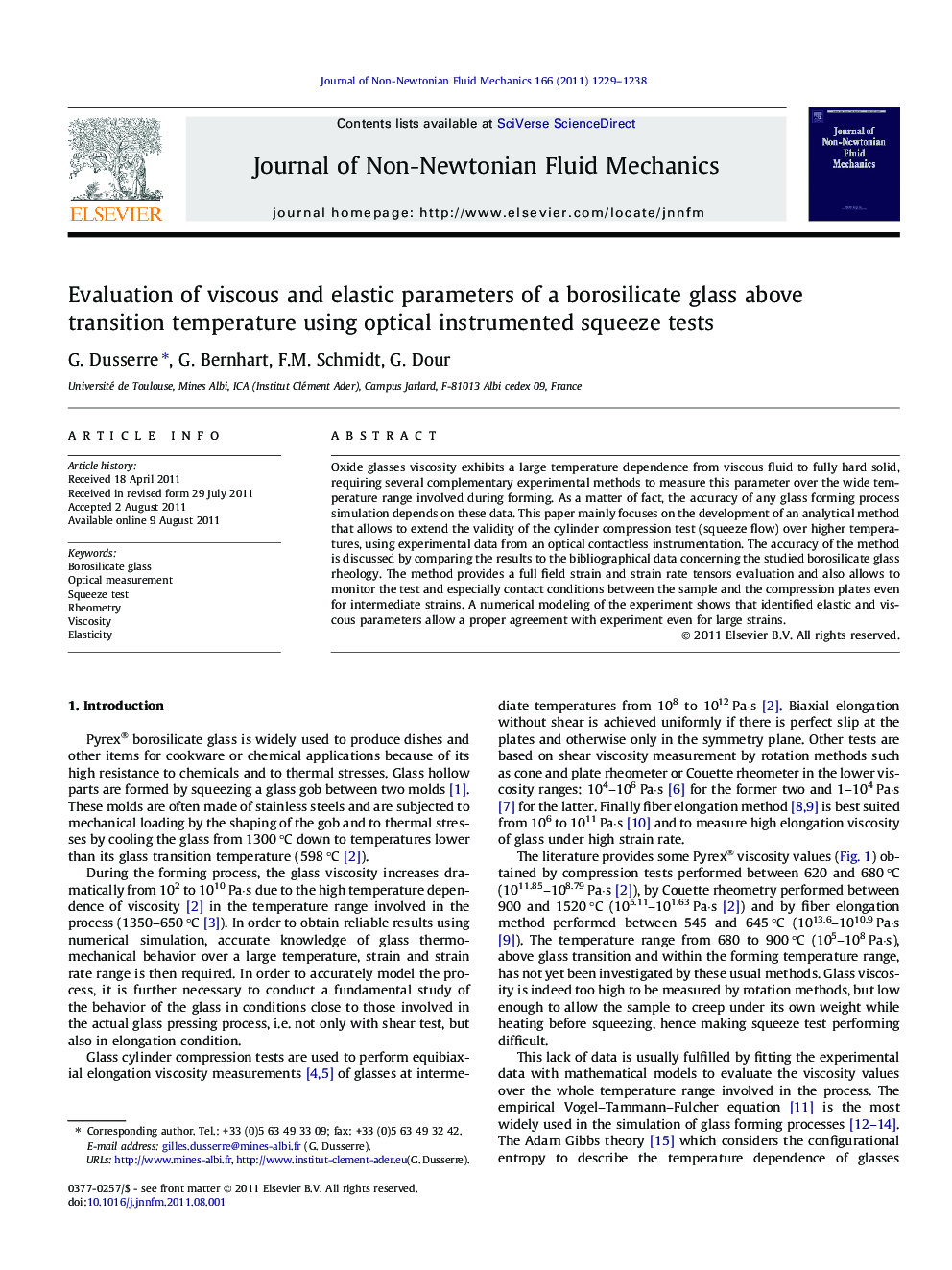| Article ID | Journal | Published Year | Pages | File Type |
|---|---|---|---|---|
| 670851 | Journal of Non-Newtonian Fluid Mechanics | 2011 | 10 Pages |
Oxide glasses viscosity exhibits a large temperature dependence from viscous fluid to fully hard solid, requiring several complementary experimental methods to measure this parameter over the wide temperature range involved during forming. As a matter of fact, the accuracy of any glass forming process simulation depends on these data. This paper mainly focuses on the development of an analytical method that allows to extend the validity of the cylinder compression test (squeeze flow) over higher temperatures, using experimental data from an optical contactless instrumentation. The accuracy of the method is discussed by comparing the results to the bibliographical data concerning the studied borosilicate glass rheology. The method provides a full field strain and strain rate tensors evaluation and also allows to monitor the test and especially contact conditions between the sample and the compression plates even for intermediate strains. A numerical modeling of the experiment shows that identified elastic and viscous parameters allow a proper agreement with experiment even for large strains.
► Borosilicate glass viscosity is investigated by compression tests above Tg. ► Higher temperature investigation are possible thanks to an optical instrumentation. ► Rheology and friction are analytically investigated separately during the same test. ► Results are in proper agreement with bibliographical data. ► Results complement bibliographical data obtained with classical methods.
